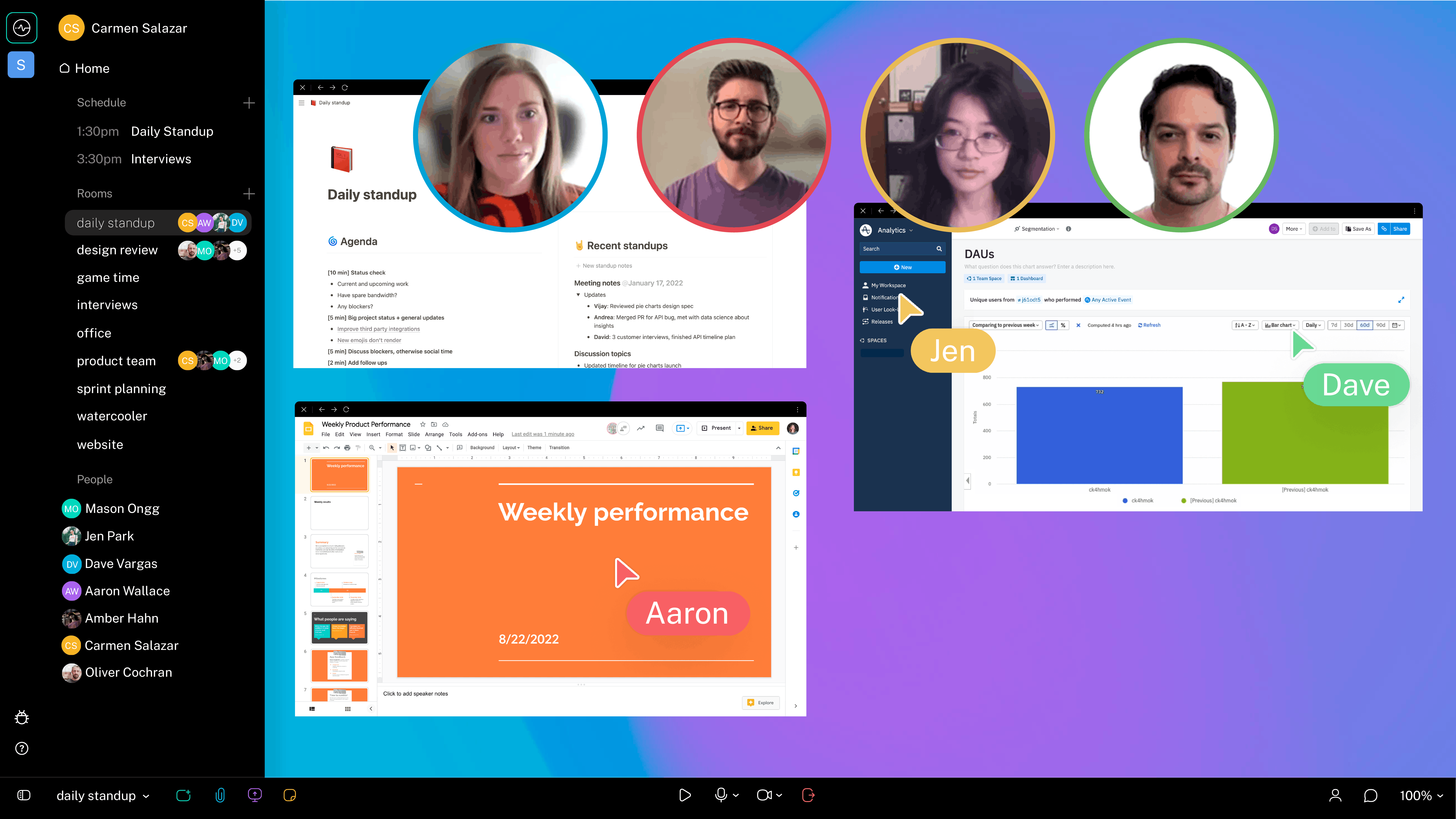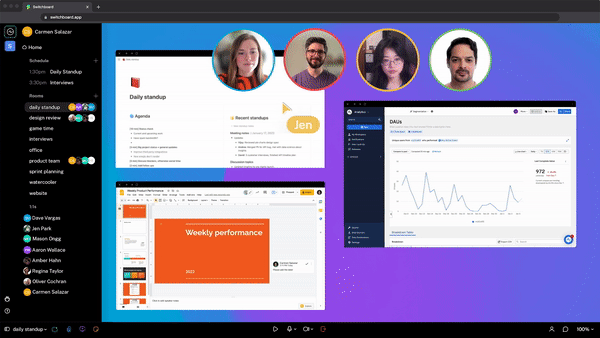Subscribe
Sign in
Why I’ll only found remote-first companies moving forward

Share On
I am a people person but you’ll never find me in an office job again.
I founded my sixth company, Switchboard, in March 2020. It was remote by necessity. Moving forward, every company I found will be remote by choice.
The benefits of remote work far outweigh the perks of being tied to a physical office.
That said, you need to be intentional about how to set up and run a remote company because as much as some of us would like it to be, it’s not the same as in-person (and that’s a good thing!).
Here’s what I learned:
You can hire a team that makes your product better
When you’re building a product, it’s easy to fall into the trap of building for yourself. With Switchboard, I was able to hire people from anywhere for the first time. While about a quarter of our company lives in the San Francisco Bay Area near me, 75% lives in other parts of the state and the country. Having a diverse team increases the likelihood that you’ll create a product with fewer biases.
You can hire a more equitable team
Not everyone can be in the office five days a week. Think of all of the amazing people who have been marginalized in the workforce due to transportation or caretaking commitments! Being remote certainly doesn’t solve all out-of-work commitments, but it’s a heck of a lot easier to care for a sick kid or pet when they can be in the next room.
You have more to invest in your team
Rather than investing time, money, and energy into an office space, I can channel those investments into people. That means higher salaries, more resources to help the team get work done, and team building offsites.
You’re more focused
I’m a people person but I could do without office politics. When you’re in your home, you’re focused on your work (and remembering to change the load of laundry). Getting time for heads down work is less of a challenge when you’re not in a crowded office. I’m also not distracted by things like figuring out who left the old tuna sandwich in the fridge.
Remote work also affords people something that’s priceless: freedom and flexibility. According to a study by Pew Research, 64% of at-home workers say it is easier to balance work and personal life, compared to only 16% who say it is harder and 20% who say it is the same.
Believe it or not, you trust your team more
Good leaders build trust. And it sounds counterintuitive but nothing builds trust faster than a lack of face time. I’m not going to lie – at first it creates anxiety. But then it helps you develop better leadership qualities faster. You learn to delegate more and how to decide what details you want to get involved in.
Remote work isn’t perfect – it can be lonely and frustrating.
It’s more inclusive than the office, but still creates issues
Not everyone has the luxury of a dedicated, private space in their home to work. Even if we do have space, we might have trouble disconnecting at the end of the work day. Bad habits can form if leaders don’t respect limitations and boundaries.
Nothing replaces a cup of coffee or walk around the block
It’s so easy to lose spontaneity and casual discussions when you’re not physically with other people. We miss the connective cues from body language or other forms of non-verbal communication. Research has shown that casual and informal relationships are integral for collaboration and work enjoyment. (That’s part of the reason why we created Switchboard in the first place, but that is a story for a different day!)
You can’t rest on your leadership laurels
Navigating the transition from in-person to fully virtual during the pandemic was tough, and anxiety inducing. It forced me to become a better communicator, confidant, mentor, and even wellness expert! What has worked in the past to create a thriving employee culture fell flat. Online happy hour, anyone?
The playbook for running a fully-remote company
Here are a few specific things I wish someone told me:
First, choose a lane: Remote or not
The challenge with hybrid work is that either in-person or remote wins as the main driver of culture, and it sets up a divisive Us vs Them dynamic.
Make sure that you are approaching leadership, culture-building, employee engagement, productivity all from the lens of remote-first engagement.
Start with the question of, “How can I best build an environment where distributed individuals can be and do their best?” That means everything from making sure people are physically comfortable in their workspace to making sure there isn’t an unintentional headquarters city that makes other people feel left out. For example, when I meet with my Leadership team in person, we don’t grab beers afterwards with other employees in the area. It’s hard to draw the line but it’s harder if a subset of your employees feel excluded.
Be very conscious of creating overlapping working times
While you have the power to hire anyone from essentially anywhere in the world, you don’t want to feel tethered to your computer. Hire in overlapping time zones whenever possible, or establishing clear expectations for those who are outside of it. Use the Schedule for later option in Slack or encourage everyone to block their calendars based on their time zone.
Limit screen time
It sounds counterintuitive for a remote-first workforce, but get creative about how you can help your employees step away from their screens. Can you incorporate more walking meetings? Set aside no meeting days? Give your employees the tools they need to show up to their meetings ready to act and engage rather than zone out on video calls.
Make space for meaningful connection
Use in-person time for connection, not productivity. Remote work doesn’t mean that teams never see each other but it is infrequent. When we’re all together, we leave our to-do lists on our desks at home. We focus on breaking bread together and getting to know each other better. When we have a meaningful shared experience, we have more grace, empathy, and understanding of each other the next time we see each other on the screen.
Bonus: Create space for remote-first rituals. We meet for a weekly All Hands to catch up on the week and share demos. One of our engineers hosts a weekly game hour where we play online games together. We went through a Wordle phase. Listen to your employees and choose something that feels genuine to your team to create a sense of belonging.
The great remote experiment
I love my team and I wouldn’t have been able to hire 75% of them if we were not remote.
We know each other’s pets. We have more freedom and flexibility in our personal lives. I get the privilege to invest in their careers instead of office plants.
Becoming a remote-first leader has certainly been a learning curve, but worth the effort. In the spirit of my own professional development, I continue to ask for feedback from my employees to make our company even better.
I would be remiss not to mention that half the workforce cannot physically do their jobs from home and my learning comes from a position of privilege. That said, if it's even a remote possibility for you and your workforce, I urge you to consider the option.
We’re in this remote experiment together. If we all work on creating better conditions for remote work, we all win. That’s a big reason we created Switchboard, a collaboration tool designed for remote work. It’s a cloud co-working space that’s part cloud browsers, part conference room, part video call. You can work with your team side-by-side, even when you’re not in the same room.

I want to hear your ideas about how to make remote work even better. We can collaborate and exchange ideas in a Switchboard room, of course.
Comments (20)
Sandeep Acharya@sandeep_acharya

Docswrite
I am working remotely from India since 2018 for a Los Angeles based company with a very good pay. People used to ask me if it's safe to work remotely as I can be fired any day. I used to reply your skills are your most valuable assets.
That's the same reason I started https://remotefront.io in 2020. Also wrote this ebook on this https://sandeep1995.gumroad.com/...
Share

CuratedLA
Saw the headline, came up with a quick answer: bc is OP is smart.
Fully agree, the trajectory of many workplaces is unmistakably veering towards remote jobs. It’s happening across sectors and industries, where many traditional professions like nursing are being reimagined. That's precisely the reason why we launched https://remotenursingjobs.com/ earlier this year.
Very inspiring article, thanks
Document AI by Playmaker
Congrats @rishabh_sonker for the launch. It is great to see more tools made purposely for remote teams
More stories

Mathew Hardy · How To · 3 min read
How to Detect AI Content with Keystroke Tracking

Sanjana Friedman · Opinions · 9 min read
The Case for Supabase

Vaibhav Gupta · Opinions · 10 min read
3.5 Years, 12 Hard Pivots, Still Not Dead
Kyle Corbitt · How To · 5 min read
A Founder’s Guide to AI Fine-Tuning

Chris Bakke · How To · 6 min read
A Better Way to Get Your First 10 B2B Customers

